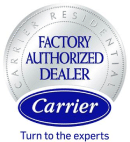If you think you can escape polluted air indoors, think again. Depending on your habits, lifestyle and your home’s structure, the air indoors may present more problems than the air you breathe outdoors. With the addition of air quality products that can purify air by reducing and eliminating unwanted pollutants, you and your family can enjoy a healthier and fresher environment indoors. Some of the most important air quality products you should consider include:
Air Purifiers
An air purifier is one of the most popular air quality products installed in homes where there are household members who suffer from asthma and allergies. Air purifiers work by passing air through filters to remove particles and other pollutants. Once the air comes out of the purifier, its pollutant content is significantly reduced. Many of today’s cooling and heating systems have a built-in air purifier, although many homes still install a stand-alone unit for extra protection.
Some of the most common types of air purifiers sold in the market include:
HEPA filters – High Efficiency Particulate Air purifiers that can eliminate particulates as small as 0.3 micrometers
Ozone Generators – capable of turning oxygen molecules into ozone that disinfects the air and removes unpleasant odor
Adsorbents – materials such as activated charcoal that attract particulates and remove them from the air. Adsorbents are usually added to certain designs of air purifiers to make them more efficient in eliminating contaminants and odors
Ionizing Purifiers – create ions, which are charged molecules that attract dust, pollen and other particulates so the air that flows out is clean
Humidifiers
A humidifier helps prevent dry air which causes irritation of the eyes, mucus membranes and nasal passageways. It also helps reduce your susceptibility to contaminants in the air, such as bacteria and viruses. Larger homes may require multiple humidifiers to improve air quality. However, for more efficient moisture delivery, fan-powered humidifiers may be installed instead. Fan-powered humidifiers usually have high capacities and can efficiently increase moisture content in the air across large spaces especially during winter.
Air Ventilators
Air ventilators facilitate the movement of air both outdoors and indoors. This exchange of air performs two functions: it moves hot, uncomfortable air outside and lets in fresh, clean air inside. Many homes rely on natural ventilation provided by doors, windows and vents but since not every home may incorporate elements of natural ventilation, efficient air ventilators may have to be installed.
Air ventilators are also called mechanical ventilation systems that utilize fans to eliminate polluted and foul-smelling indoor air by moving it outside, thus keeping rooms fresh. Efficient air ventilators are usually incorporated into the heating and cooling system of the house and operated using an electronic device to make them more convenient to use.
Carbon Monoxide Alarm
Carbon monoxide is a poisonous gas that forms when fuel-based devices such as ovens, furnaces, dryers, heaters, grills and fireplaces are operated and there is incomplete combustion. In low levels, carbon monoxide is not dangerous but once it increases in the air, it can cause irritation and breathing difficulties. In high levels, it is even highly toxic.
Because it is odorless and colorless, carbon monoxide is difficult to detect using the senses. Installing a carbon monoxide alarm will help prevent a potentially lethal exposure to the gas. A carbon monoxide alarm is equipped with a detector that is triggered through exposure to the gas, an action that causes an electrochemical reaction. The alarm only goes off if it detects the gas. A carbon monoxide alarm does not necessarily perform an active role in keeping indoor air quality clean and odor-free but it does perform a very important function and must be integrated into the system that maintains air quality at home.








